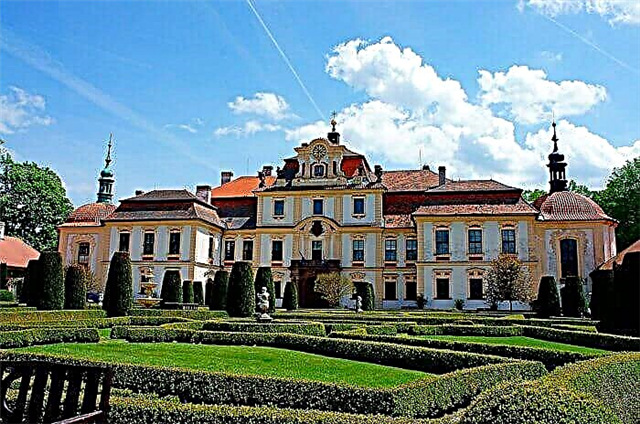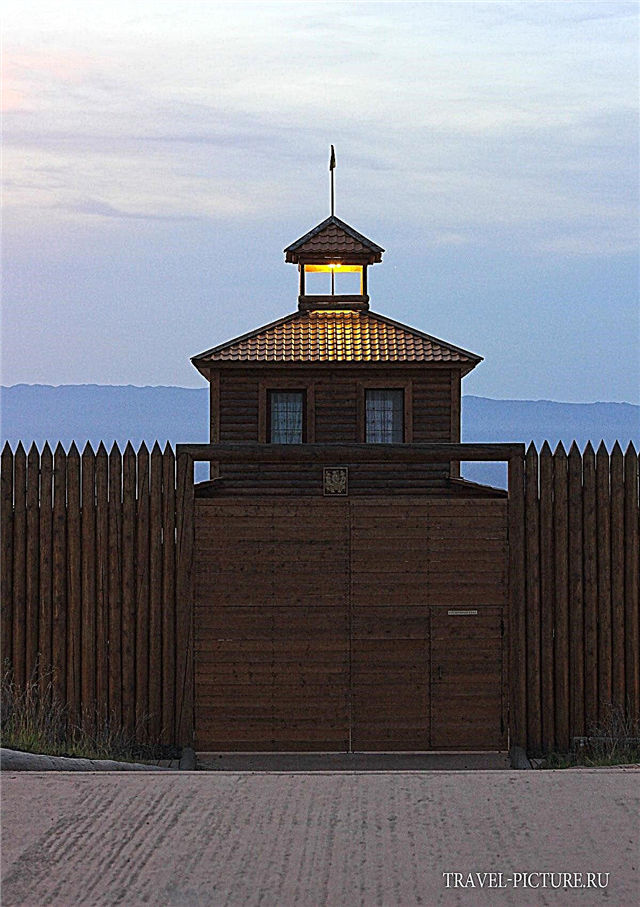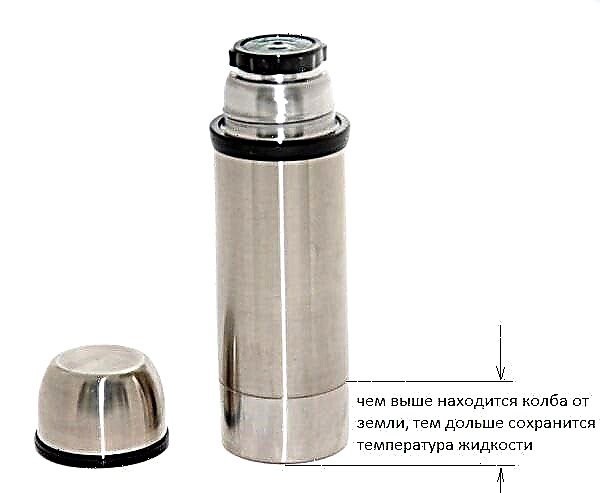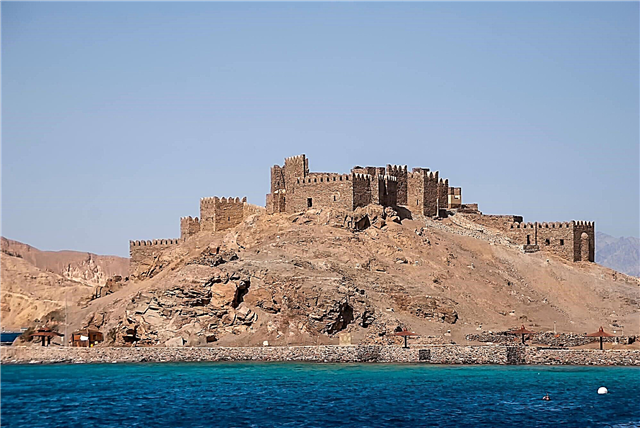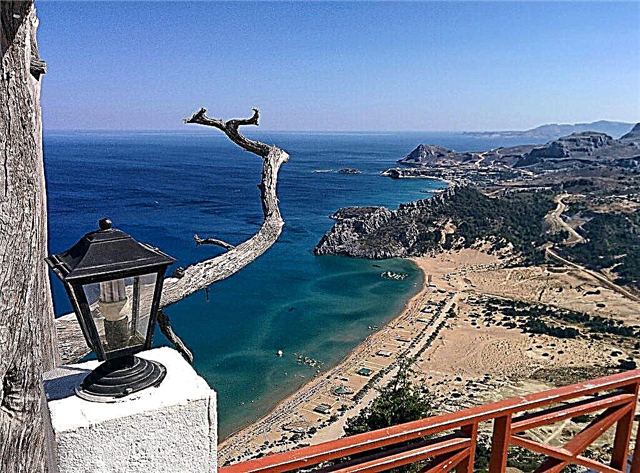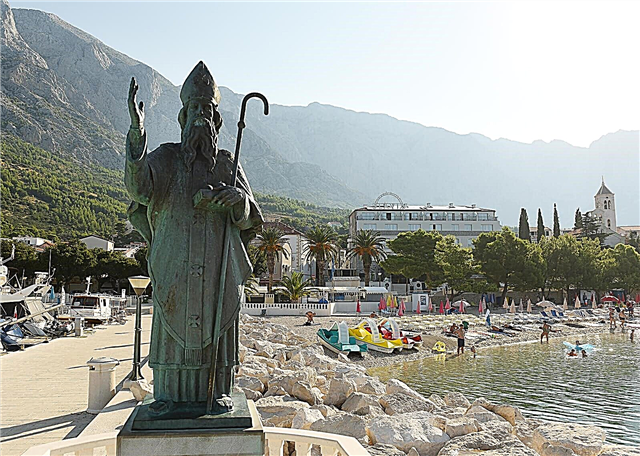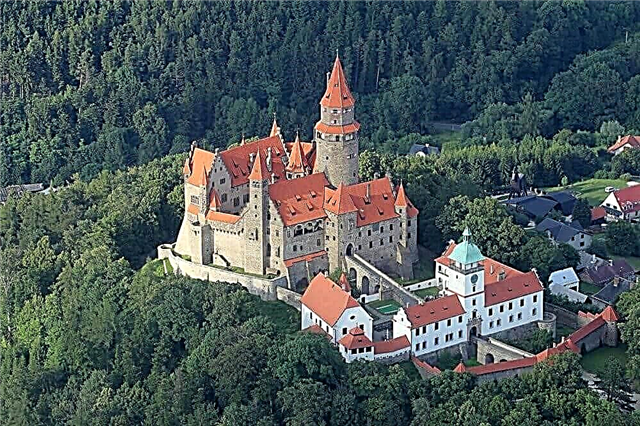The Czech Republic is not only a beer paradise, but also a country of castles. Therefore, in a small territory of the Czech Republic there are a great many castles. And different: from gloomy citadels to relatively fresh architectural complexes. These fortresses have long lost their strategic importance, turning into museums of the Middle Ages and later eras, and now they are taken by storm exclusively by tourists.
Each castle has its own fascinating history associated with personalities that are known to many of the textbooks. Some will seem familiar - a lot of adventure films about the Middle Ages have been filmed here. According to rumors, a number of especially old citadels have even become the abode of ghosts.
The most beautiful castles and fortresses in the Czech Republic
List, photo with titles and descriptions.
Karlstein
The founder of the castle, Emperor Charles IV, was a collector of holy relics and precious wonders. Therefore, his summer residence became their repository, turning into a museum in our time. True, there are not many relics left, most of them were taken to Prague. The castle has undergone major restoration and its naturalness has been lost. They restored it in an exaggerated medieval form, which is very popular with tourists, but not especially with historians.

Deep
Initially - a powerful fortification of the XIII century in the Gothic style, later deeply rebuilt in the manner of the British Windsor Castle. Its 140 rooms with 11 towers are open to tourists and have been converted into exhibits of their owners' personal belongings for almost 800 years. The exhibits include armor, Dutch painting, tapestries, glass and porcelain collections, hunting trophies and antique furniture.

Prague Castle
Fortress inside Prague on the long cliff of Petrin Hill. This is the current residence of the Czech president, so you won't be able to fully inspect the castle, which is considered the largest in the world. But most of the huge complex is open to the public, among the available: the Royal Garden, several cathedrals, all courtyards, the Orangery and a number of museum rooms in the main palace.

Loket
An ancient castle near Karlovy Vary, named for the unusual curved shape of the entire complex, resembling an elbow. This is a classic medieval citadel with all the paraphernalia: a donjon, the owner's palace, an arsenal, storage facilities, a temple, fortifications and even a prison with a torture chamber. This giant museum is literally packed with antique relics and artifacts.

Krumlov Castle
The formidable citadel of the 13th century, which saved the family of its owners, the Rozhberks during the Hussite Wars in the 17th century, was radically rebuilt. As a result, the Gothic stronghold turned into a cozy baroque castle with a theater and an English park. The main attractions are the Bellaria Palace and the theater, rebuilt after a lengthy restoration and turned into a museum of the history of Czech acting.

Miller
This unusual castle gave its name to the town that surrounded it. This is the former residence of the "exiled" wives of Czech kings. Even the monarchs could not officially divorce, so the annoying women were sent here. The local museum is dedicated to the life of the exiled queens, their entertainment and recreation. The castle is luxurious and cozy, therefore the spouses often waited for their unloved husband to finally "drive" them to Melnik.

Orlik
A small fortification that controlled shipping on the Vltava River. Once the building towered over the river bed, but after the construction of the dam, the cape was almost flooded and now the water is splashing right under the fortress walls. Lovers of medieval surroundings come here: there is a rich collection of weapons, armor, rare books and utensils that belonged to the old Schwarzenberg family.

Lednice
The ancestral home of the princes of Liechtenstein, a large castle complex with parks, squares and artificial ruins of a medieval fortress built in 1801. In addition to visiting palaces with unique interiors, such as a bathtub made of a giant piece of pink marble and a museum of dolls, tourists will find a local wine cellar. The products can be tasted, and the variety you like can be purchased at the adjoining shop.

Chervena-Lgota
Located on a rocky island in the middle of an artificial pond. The original 14th century Gothic fortress was rebuilt in the early Baroque style two hundred years after its construction. Painted red, which is associated with a legend: they say this is how they hide an indelible bloody stain under one of the windows, left after the suicide of the princess who lived here. Several films have been shot here, including the 1976 Russian "The Princess and the Pea".

Pernstein
Ancestral nest of the Moravian family of the same name. A traditional Gothic-style castle, almost unchanged since the 13th century, only slightly improved later: several bastions and towers were added. The view of the citadel and part of the decoration may seem familiar to tourists: the comedy film "Aliens" about medieval time travelers with Jean Reno was filmed here.

Konopiste
The citadel of the French Gothic type with a rich history: it was besieged and taken by storm several times in different eras. In 1943, the General Staff of the SS forces chose the castle as a place of deployment, here the Nazis kept captured artifacts and valuables. Now it houses the third largest European collection of hunting weapons and trophies, works of art, armor, weapons.

Bouzov
A former military Gothic castle, rebuilt into a Romanesque complex in the 20th century. The owners of the citadel often changed, it happened to be a prison, the residence of the Teutonic Order and the administrative building of the SS administration, and a repository of museum valuables stolen by the Nazis. Now it is a state museum dedicated to everyone who owned the fortress over eight hundred years of its history.
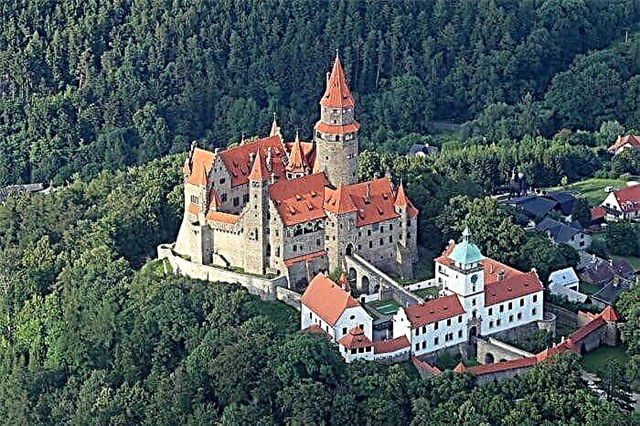
Cesky Sternberk
The ancient ancestral castle of Sternberkov, in which members of the family still live. And the hosts welcome tourists all year round. Unusual guides will tell you about the history of the castle associated with their family, and will lead tourists through the numerous halls. Among the exhibits: traditional weapons, armor, painting collections and unique paintings by Italian masters.

Gouska
The most mystical Czech castle. According to legend, one secret underground passage in the basements of the citadel leads to Hell. Tourists have not disappeared there yet, but the mysterious is really present: in the castle prayer room people feel bad, and the dogs generally avoid getting close. The very purpose of the fortress is not clear, it has no strategic significance, and the frescoes decorating the halls are dedicated to the theme of the Apocalypse.

Bečov nad Teploi
An architectural "hybrid" of a military fortress and an elegant palace. They come here to see the reliquary of St. Maurus: a carved sarcophagus inlaid with jewels and admire the castle interiors, decorated with a collection of paintings by the last owners of the castle. There is no direct access for tourists, only as part of an excursion, and inspection of the relics and a walk through the halls are paid separately.

Jindrichuv Hradec
A huge castle in the middle of a real museum town. The fortress is the third largest of the Czech citadels, there are more than three hundred rooms for excursions. It was rebuilt many times, usually in parts, because its individual parts are made in different styles: from late Gothic to Empire. The Spanish wing of the castle regularly hosts exhibitions, festivals and concerts of medieval themes.

Zbirog
A powerful medieval fortress, which became a place of entertainment for Czech kings, which led to a radical change in appearance: from a gloomy stronghold to an elegant castle.Attractions here: the deepest European well at 168 meters, the Masonic living room with a collection of paintings, the Arrest Tower and a real medieval tavern serving old Czech dishes and our own freshly brewed beer.
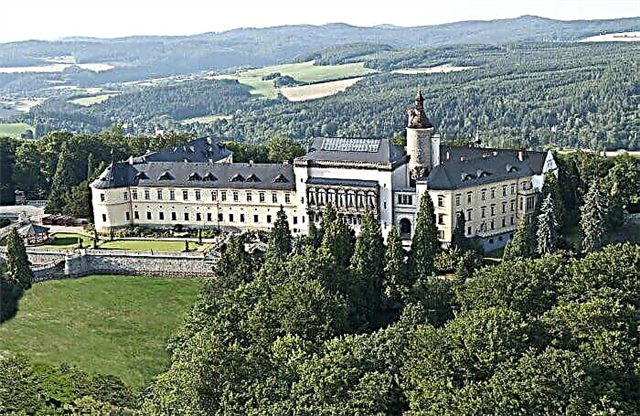
Krshivoklat
Place of entertainment for the Czech aristocracy and kings. The castle is surrounded by legends, one by one somewhere in secret rooms is kept the Philosopher's Stone, obtained by an English alchemist who worked here. Prison casemates are especially popular: the surroundings of such a terrible place have been restored here - torture chambers with appropriate instruments and tiny "loners" where prisoners were immured alive.

Bitov
This castle looks like a picture: it is located on a powerful cliff in the middle of the forest, surrounded by a deep moat, through which a stone viaduct rests against a lifting gate. Main attraction: The collection of effigies of Baron Gaas, the last owner of the castle. Hundreds of taxidermist-treated cats, dogs and squirrels in human costumes represent scenes from human life.

Sykhrov
A young neo-Gothic castle that became a refuge for the French nobility who escaped after the revolution. The castle palace is nicknamed the "Carved Wonder of the Czech Republic" for its huge collection of antique furniture by Peter Bushek, the famous carver. Researchers are attracted here by an extensive library, and tourists are attracted by a huge English park and "Arthur's castle": large-scale artificial ruins of the legendary Camelot.

Zleby
It houses a huge museum of the Czech Middle Ages. A lot of ancient weapons, armor, military standards and other paraphernalia. There is a ghost of its own: the spirit of a girl-governess who fell out of the tower under mysterious circumstances in the 19th century. It becomes especially uncomfortable from this story when wandering through the castle catacombs. But it should be borne in mind that the citadel is closed from November to March and registration for excursions in the rest of the time is carried out in advance.

Karlova Coruna
A relatively new castle-palace in the Baroque style, built in the 18th century. It is part of the Czech National Gallery, because its halls are exhibitions of artwork in the same style as the building - Baroque. A separate exposition is devoted to horses, a special local breed and hippology in general, another one tells about the Kinsky family, who owned an unusual palace for almost two hundred years.

Pruhonitsky castle
Luxurious castle with an amazing botanical garden near Prague. It is a working laboratory of the Czech Institute of Botany, accessible to tourists. People come here to admire the collections of flowers and beautiful landscapes, including small waterfalls, graceful bridges, and alpine slides. A popular pond with "watch" carps, which can be fed with special baked goods purchased locally.

Litomyšl Castle
Classic castle-palace of the Renaissance. It never had a military purpose and was only a place of entertainment, for which a theater was equipped at the castle. After World War II, the castle acquired the status of a national music museum. A popular wedding venue for those wishing to celebrate among luxurious palace apartments or in a more exotic way - in the gloomy nooks and crannies of casemates and catacombs.

Shpilberk
The castle of the 13th century, which later received the nickname "The Prison of Nations" after the re-equipment in 1783 of part of the castle casemates for places of imprisonment of political opponents of the monarchy. Nowadays, the gloomy prison is a museum of the city of Brno. The main attraction: those very prison and torture cells, in addition to them - the pharmaceutical laboratory, the jewelry-cutting room and the halls of history of Spilberk himself.

Friedlant
A unique architectural complex: dark Gothic on the outside and artsy Renaissance on the inside. Tourists here are interested in the Castle Armory, which displays hunting and military weapons that served the inhabitants from the time the citadel was built in the 13th century to modern models. Another attraction is a fifty-meter high land lighthouse, which shows the way to Frýdlant for traders and travelers.

Rosenberg
Originally a military Gothic castle in the 19th century, it was rebuilt in the spirit of the English Renaissance. Today it is a huge museum of medieval weapons and Czech heraldry. In addition, some of the rooms are reserved for art galleries of paintings by local and European painters in the Baroque style. The ghost of Perkhta, the wife of a Moravian nobleman, who cursed the girl before her death by depriving her of peace in the afterlife, also lives here.

Cost
This castle has not been rebuilt since its construction, therefore it is the only "clean" Gothic fortress. The citadel belongs to private individuals, but there are no obstacles to visiting, both with a guided tour and on your own. There is a collection of Renaissance paintings, dark dungeons with eerie torture chambers and an exhibition dedicated to the Kinsky family that had ruled the stronghold for centuries.

Kuneticka Gora
A medieval castle with a rich military history. Because of this, nothing remained of the original building of the 14th century: after numerous assaults, it was repeatedly restored. It is noteworthy that tourists are trusted to explore the territory on their own, the only place where it is impossible without a guide is the castle chapel. Museum expositions are classic for castles: weapons, armor, torture chambers.

Bukhlov
The castle with a funny name for a Russian ear has something to see. First of all, these are the Renaissance interiors, the armory and the knight's hall, filled with deadly ancient iron. But most tourists come to meet the legendary Black Lady, a local ghost. As for the personality of the cast, the controversy does not subside, because there are no terrible legends about the girls who died tragically here.

Telc
Royal castle from the 14th century, which later became the patrimony of an old Czech family. Its last reconstruction was carried out by Italian craftsmen, which brought appropriate notes to the appearance of the building. The fortress is very large, therefore there are several excursion routes here, they are paid separately. You can see hunting trophies and old ammunition in the Knights' Hall, or get acquainted with a traditional Czech toy in the corresponding exhibition.

Vevezhi
Perhaps the oldest Czech castle, roughly the beginning of the 11th century. The citadel has a rich history: its defenders defended Brno for centuries, withstood numerous sieges. It housed a training center for the Abwehr and the SS special forces during World War II. Now the chateau halls have been turned into a museum of the Middle Ages, and wine cellars have been opened in the cellars, where local Moravian wines are tasted.

Podebrady castle
Founded on the site of a Roman fort. Some of the halls of the citadel have been turned into a branch of the Polabian Museum of the Czech King Jiří, famous for his wisdom and good disposition. The collection was collected by the efforts of the local branch of Charles University, which owns the building. A healing spring discovered by the German mystics von Büllow is located right in the courtyard of the castle.

Vranov nad Diyi
A majestic castle with white walls and a bright red baroque tiled roof, rebuilt from a Gothic fortress. It is famous for its huge collection of antique carved furniture, housed in 25 chateau halls and a luxurious tomb of the owners of the palace. It possesses a unique collection of Vranov porcelain, for which the potters of the nearby craft town have always been famous.

Emnishte
A two-storey castle-palace of the Baroque style, which belonged to the eminent Sternberk family. The peculiarity of the museum is the opportunity to spend a night, including with a romantic slant, in an apartment on an antique bed and among real old interiors.For convenience, there is a cozy cafe at the palace, and souvenirs can be purchased at the local shop as a souvenir of your stay in a real noble estate.
